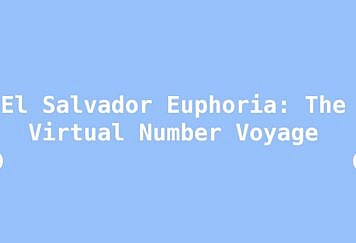In the current “remote work” environment, staff augmentation seems to be the new normal for businesses seeking to extend their in-house teams. The shift to distributed project teams has been accelerating during the pandemic. More companies are starting to opt for outsourcing services, which is expected to lead to the IT market increase by 7.7% from 2020 to 2027. This adoption creates new challenges for companies that have to learn how to manage remote teams.
Outsourced Team Is Our Team Too
When leveraging IT staff augmentation services, you need to understand that though an outsourced team will work temporarily with you, the level of their engagement plays an important role in project delivery. According to Gallup’s survey, engaged employees are 17% more productive and are 40% more efficient than disengaged teams in terms of quality. Thus, just imagine that you can enhance the productivity of your workforce. And below is how you can do it.
How to Motivate and Engage With Your Outsourced Teams
Make Sure Your Team Is Aware Of the Big Picture
When extending your team with remote workers, you need to help your new staff ‘’see the big picture’’ as if they were your in-house employees. By ensuring it, the onboarding of augmented employees will be faster, while a deep understanding of the company and project’s goals will streamline their engagement and overall performance. Below are some of the recommendations provided by an organizational psychologist on how to help the staff see the bigger picture:
- Tell your employees why the organization exists, and what you’re trying to achieve.
- Explain how the employee’s work will contribute to the achievement of the organization’s mission and vision.
- Provide the big picture at team meetings.
- Be transparent when outlining the big picture.
Prioritize Real-Time Communication
When working with distributed teams, the distance may influence communication between team members. The best way to overcome possible issues that may arise from poor communication is to prioritize real-time collaboration and clarify communication protocols.
Well-defined communication protocols can minimize information gaps that may arise because of different geo-locations and time zones. By making the best out of time overlaps, implement real-time video conferencing (Google Meet, Zoom, Skype, etc.), real-time chats (Slack, Facebook Workplace), and visual displays tracking the project’s progress statuses.
Build Trust in Your Team
It’s essential to build trusting relationships with a remote distributed team. On the one hand, trust is based on the responsibility of remote employees, while on the other hand, you should let your remote team operate independently.
According to a survey conducted by Gallup, trust is the foundation of a great manager/remote employee relationship. Thus, businesses that can create trust and a sense of community with augmented staff will likely achieve better engagement and productivity. To create a trusting atmosphere within a distributed remote team with augmented staff:
- Work out clear expectations by setting the amount of work to do and performance evaluation criteria.
- Ensure that your remote team has all the required materials and information they need to perform the job correctly.
- Talk to employees to find out their opinions on how they can improve their performance.
Keep Your Relationship Transparent
First of all, to ensure transparency, all parties should observe the transparency of all actions related to the project. Transparency can be established through Agile-based software development processes. If you aren’t new to the IT industry, you may know that Agile is based on the key values that prioritize individuals, interactions, working software, customer collaboration, and responding to changes. The values are aimed at transparent information sharing and creating an atmosphere where each team member is engaged. Here are a few tips on how to apply Agile principles to keep relationships with your augmented team transparent.
On-Site Meetings
In pandemic times and especially for outsourcing locations, regular on-site meetings may be problematic. Still, real-life meetings are helpful at the beginning of the project to enforce transparency for both sides. For example, they allow your augmented staff to know who makes the client’s in-house team. On top of meeting with clients, it is important to have in-person meetings with your staff as well. If your team is located all around the globe, and an in-person meeting isn’t possible, virtual conferences can be just as effective. Various companies have been offering in-person aspects of a conference to the virtual space. Take https://escapely.com/ for example. They have taken the idea of virtual escape rooms and brought this online. Allowing teams to work together to solve these puzzles together, regardless of location.
Daily Updates
Transparency is all about continuous communication. Be sure your augmented staff is on the same page with your in-house staff. Depending on different factors such as time zone difference, organize regular daily or review meetings to synchronize within the team. You may also include additional communication channels such as instant messaging, email, or communities for quick arrangements and formal arrangements.
Provide Feedback
Feedback is a great motivator. Understanding your strong and weak sides is crucial both for you and your remote outsourced team. Constructive feedback works even better in remote collaboration as poor communication may lead to misunderstanding, procrastination, and low productivity.
When it comes to remote teams, it’s not enough only to show your praise by giving compliments for work done well. Detailed feedback will help your team understand if they are on the right way while working on your project. Don’t provide superficial comments about your team’s progress. Your feedback should be based on the facts about their achievements or mistakes, and how they influence the overall project delivery and your business growth.
Finally, asking for feedback is as important as providing it. By wondering whether the team feels comfortable working with you and your in-house team, you get food for thought on what you can do to keep your augmented staff engaged.
Conclusion
If you are new to remote team management, it may take some time to understand how to keep your employee engaged and motivated. Follow the advice shared in the article to choose the right strategy and management style when interacting with your virtual outsourced team. By partnering with trusted outsourcing providers such as SCAND, it’ll be easier to adopt this option of the new normal reality.
Follow TechStrange for Technology, Business, and Digital Marketing News.





